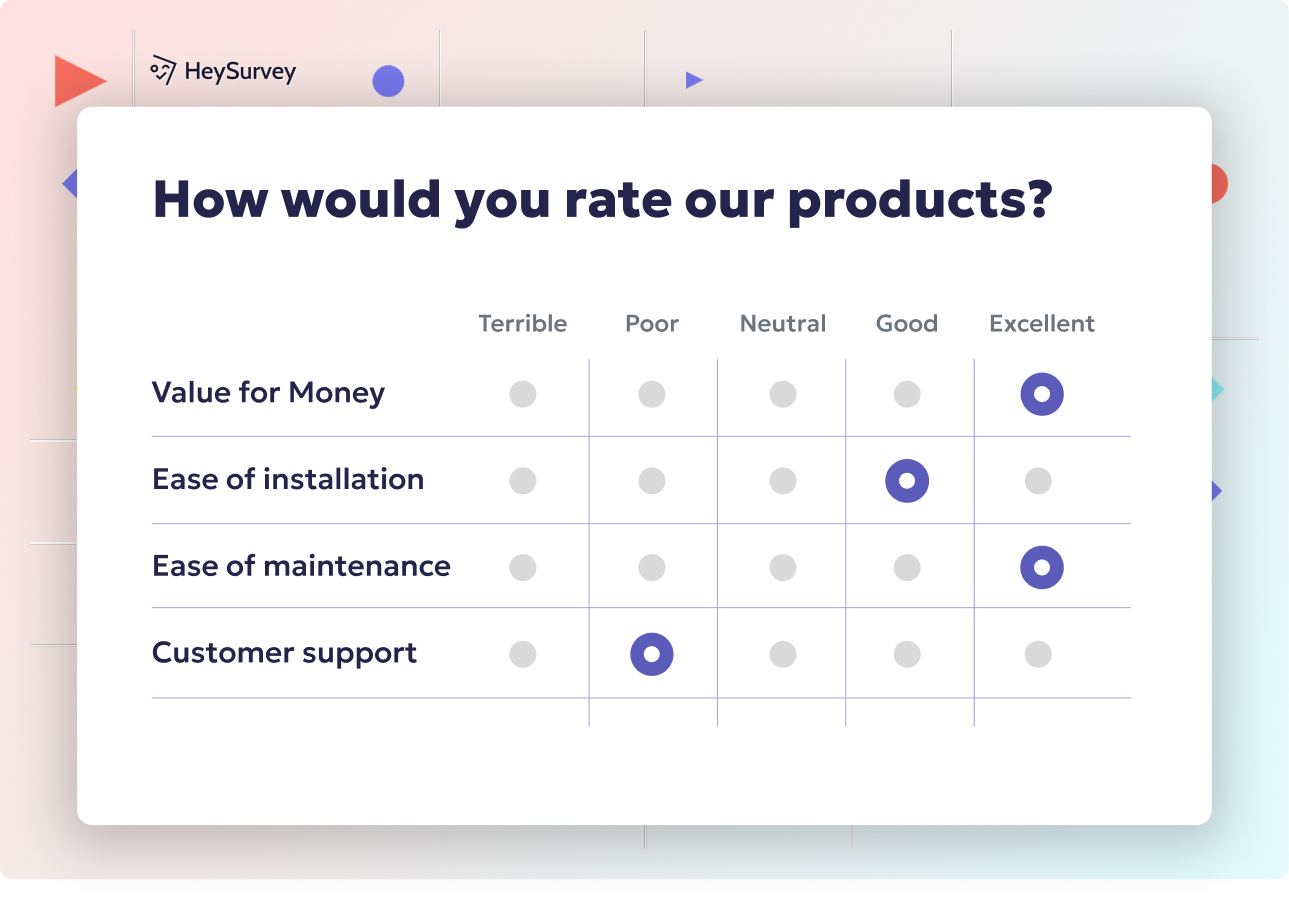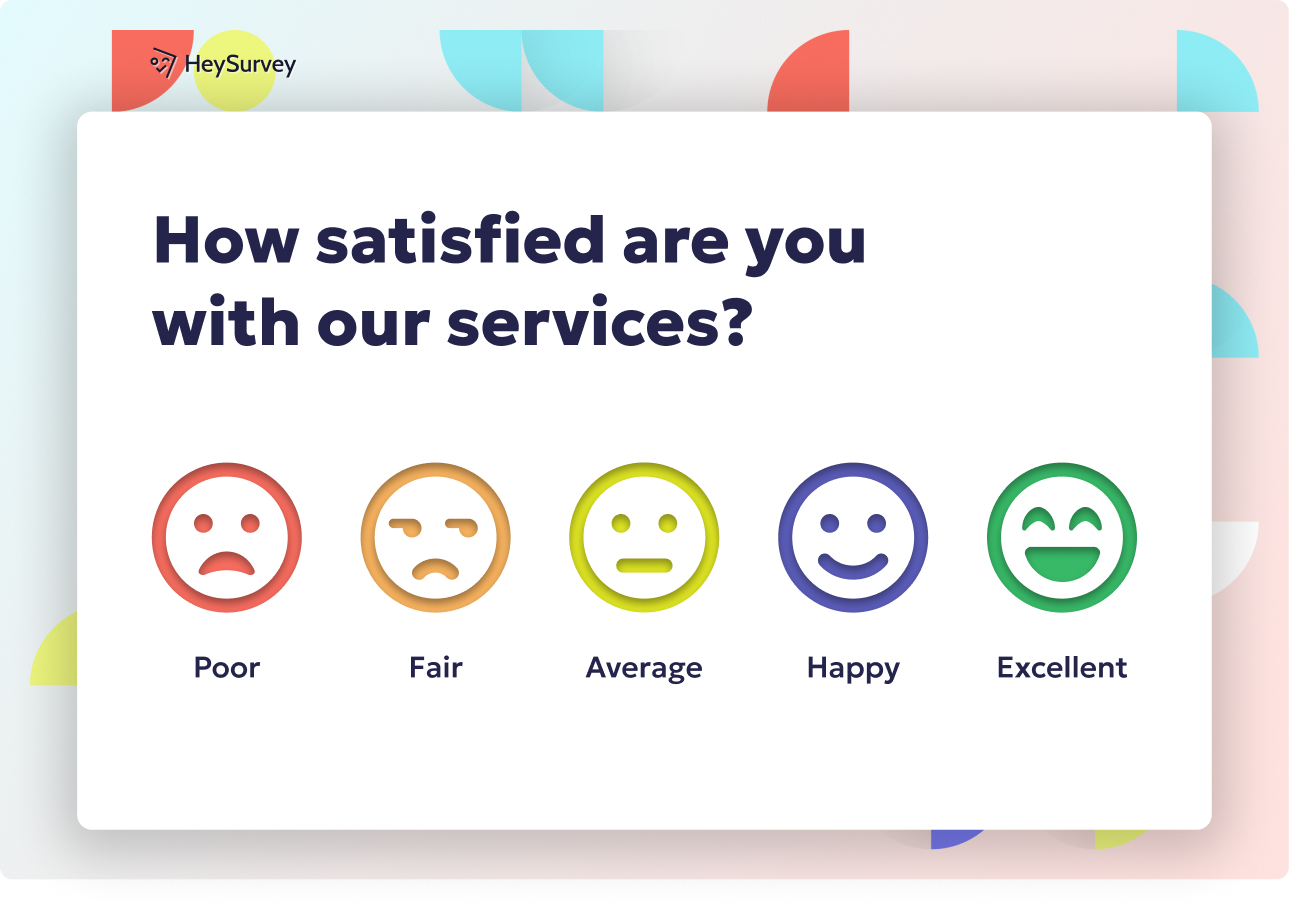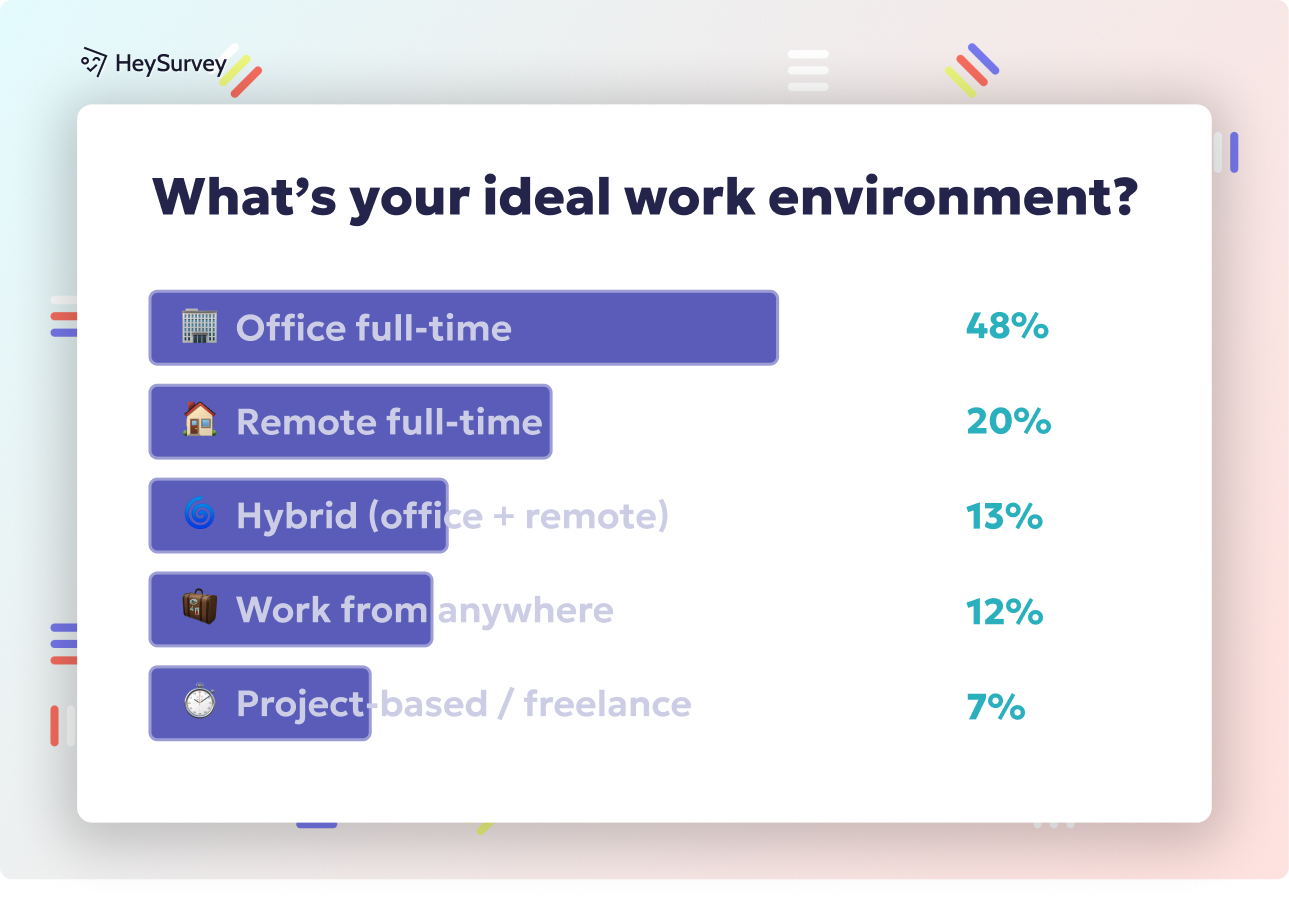29 Meeting Survey Questions for Actionable Meeting Feedback
Discover 35 expertly crafted meeting survey questions with sample prompts to boost feedback after meetings and improve meeting effectiveness.
Meeting Survey Questions: The Complete Guide to Gathering Actionable Feedback
Meeting surveys are the not-so-secret weapon of organizations fueled by hybrid work, feedback loops, and a love for clever improvement hacks. They’re quick, easy, and—if crafted well—deliver direct input to keep your meetings sharp, focused, and truly valuable. Whether you’re seeking feedback after meetings or committed to improving meeting effectiveness in today’s virtual world, let’s break down how meeting survey questions can transform your team’s collaboration and results.
Pre-Meeting Planning Survey
Why & When to Use
A pre-meeting survey is your chance to steer the ship before it even leaves the dock. When you survey invitees in advance, you tap into what they expect, where they might stumble, and what would make the gathering a genuine success. This approach isn’t just polite—it’s strategic. It helps leaders collect expectations before meetings, priming everyone for progress, not confusion.
If your agenda could turn into a sprawling list of “must-discuss” items, or if attendees frequently ask, “Why am I here?”—that’s a red flag. Use this survey before any meeting with a complex goal or diverse attendees. It uncovers blockers, gathers must-have agenda items, and settles nerves over ambiguous outcomes. Teams can:
- Align on priorities faster
- Anticipate and neutralize risks
- Weed out topics that don’t serve the meeting’s mission
And let’s be honest—everyone appreciates a host who anticipates their needs.
5 Sample Questions
What outcomes are most important for you in this meeting?
Which topics would you like added to the agenda?
How familiar are you with the meeting’s subject matter?
What concerns or risks should we address?
What would make this meeting a success for you?
Pre-meeting surveys save precious time and make sure the meeting starts on the right foot. By focusing on clarity in goal setting, you avoid unnecessary detours and build trust, not eye rolls.
Pre-meeting small talk significantly enhances meeting effectiveness, especially for less extraverted participants. (emerald.com)

Creating your meeting survey with HeySurvey is a breeze—even if you’re new to the platform. Follow these simple steps to launch your survey and start gathering actionable feedback.
Step 1: Create a New Survey
Head over to HeySurvey and click the button to create a new survey. You can choose to start from scratch, pick a relevant pre-built template, or simply type in your questions and let HeySurvey do the formatting magic. For ease, we recommend starting with a template that matches your meeting survey type—it gives you a ready-made structure and saves time.
Once your survey is created, you’ll enter the Survey Editor, where you can rename the survey to something catchy like “Post-Meeting Feedback” or “Stakeholder Alignment Check.” This helps keep things organized as you add your questions.
Step 2: Add Questions
Click the Add Question button at the top or between existing questions to start building your list. HeySurvey offers a variety of question types—text inputs, multiple-choice, scales, and more. For meeting surveys, a mix of rating scales and open text questions works wonders, letting you tune into both numbers and nuanced feedback.
Input your questions and tweak the settings, like marking a question as required or adding a description to clarify what you want. Don’t forget that you can add images or even use markdown formatting to highlight key points or break up text.
Step 3: Publish Your Survey
Once your questions are all set, hit the Preview button to see exactly how your survey will look to respondents. Make any last-minute design tweaks using the Designer Sidebar—adjust colors, fonts, or layouts until it feels just right.
When you’re happy, click Publish to generate a shareable link. Note that you’ll need a HeySurvey account to publish and access response data. Share the link with your meeting attendees via email, chat, or embed it in your intranet to start collecting responses.
Bonus Steps to Supercharge Your Survey
Apply Branding
Give your survey a professional touch by adding your company logo to the top left corner in the Branding section. You can also customize colors, fonts, and backgrounds to match your team’s vibe—making your surveys visually inviting.
Define Settings
Under the Settings panel, set start and end dates to control when your survey is live. You can also limit the number of responses, add a redirect URL for after completion, or decide whether respondents can view summary results. These options put you in the driver’s seat.
Skip Into Branches
For a personalized experience, use branching to direct respondents to different questions based on their answers. For example, if someone indicates they don’t fully understand the meeting topic, you could branch them to a follow-up question asking what info would help. This keeps surveys relevant and focused.
Ready to get started? Open your preferred meeting survey template using the button below and watch your feedback game level up—no headaches included!
Agenda Prioritization Survey
Why & When to Use
Nothing torpedoes productivity faster than an agenda that tries to please everyone—and ends up pleasing no one. An agenda prioritization survey lets participants rank agenda items, trimming away the “if we have time” fluff. This keeps meetings purposeful and shields your session from dreaded scope creep.
When is this survey most impactful? Try it if you’re planning a cross-functional project review, leadership update, or anything with a jam-packed agenda. Stakeholders often come in with clashing priorities—this micro-survey smooths the rough edges, surfaces high-value topics, and keeps the team zeroed in on what matters most.
Here’s how it helps:
- Keeps conversations on track
- Ensures the meatiest topics get proper airtime
- Nips “should we discuss this now?” debates in the bud
Meetings with a tight focus lead to higher engagement, happier attendees, and actionable results.
5 Sample Questions
Rate each proposed agenda item by importance (1–5).
Which topic could be postponed if time runs short?
Which discussion needs the deepest dive?
How much time should we allocate to each item?
What supporting data should be shared in advance?
Crafting clear priorities ensures everyone’s energy is spent where it can have the biggest impact.
Implementing agenda prioritization surveys enhances meeting productivity by ensuring critical topics receive adequate attention and reducing time spent on less important issues. (cvformat.io)
Virtual Logistics & Tech Readiness Survey
Why & When to Use
Hybrid meetings are packed with potential—but also loaded with technical potholes and timezone juggling acts. A virtual meeting survey focused on tech readiness helps spot issues before “Can you hear me now?” becomes your team’s unintentional catchphrase. This is especially essential for big, remote sessions or when people are dialing in from everywhere from New York to New Delhi.
Rolling out this survey prior to the meeting nips tech disasters and delays in the bud. It ensures:
- Everyone has the right links, logins, and tools
- Accidental laptop-mic karaoke is kept to a minimum
- Accessibility needs are handled ahead of time
By prioritizing tech readiness, even last-minute joiners can step in with confidence.
5 Sample Questions
Which video-conferencing platform do you prefer?
Will you need captioning or translation services?
Test your camera/microphone—did everything work?
What is your primary time zone?
Do you expect bandwidth issues on the meeting day?
When everyone is prepped and connected, meetings run smoother and frustrations vanish.
Stakeholder Alignment Survey
Why & When to Use
Big projects mean lots of cooks in the kitchen—and not all recipes turn out well without alignment. A stakeholder meeting survey is your recipe for harmony when a project has multiple departments, executive sponsors, and high expectations. Before kickoff or milestone meetings, use this survey to surface hidden agendas and get people rowing in the same direction.
It works wonders for:
- Projects with cross-department stakes
- Initiatives where buy-in or executive approval is critical
- High-stakes launches where there’s a lot on the line
An alignment survey reveals blind spots. It ensures core success metrics are defined before the real work begins, removing surprises and political potholes.
5 Sample Questions
What is your top priority for this project?
Which metrics will define success for you?
What risks keep you up at night?
How involved do you want to be in day-to-day decisions?
What’s your preferred communication cadence?
Getting alignment early stops headaches later. It also builds clearer accountability from the top down.
A study found that aligning survey objectives with organizational goals enhances the effectiveness of stakeholder engagement surveys. (fastercapital.com)
Post-Meeting Feedback Survey
Why & When to Use
With the meeting now in the rear-view mirror, a post-meeting survey captures how things really went—while memories are still fresh and honest. Instead of waiting until people have forgotten the painful parts (or the delightful wins), get fast feedback to continuously improve future meetings.
Send this survey within 24 hours, especially for recurring gatherings or high-stakes reviews. This helps you:
- Spot trends in meeting effectiveness over time
- Address issues before they become recurring nightmares
- Uncover new ideas for formats or facilitation
By encouraging feedback after meetings, you prove that attendee input translates into action—not just vanity metrics.
5 Sample Questions
Rate the overall effectiveness of today’s meeting (1–10).
Was the objective of the meeting clear?
Did you leave with actionable next steps?
What should we keep doing?
What should we stop or start doing?
This rapid feedback cycle means your meetings get a little better, every single time.
Recurring Meeting Pulse Survey
Why & When to Use
Standing meetings can either be a powerhouse for collaboration—or slowly drift into calendar clutter. A pulse survey for meetings delivers a “quick health check” to see how things are going over time, making invisible issues suddenly obvious.
These pulse surveys are ideal for:
- Monthly or quarterly team check-ins
- Sprint retrospectives where improvement is ongoing
- Any regularly scheduled session that should earn its spot on the calendar
By tracking long-term patterns, you can see if meetings are still adding value or if it’s time to refresh the format. Tiny tweaks, made consistently, keep recurring meetings engaging.
5 Sample Questions
Are these meetings still adding value to your work?
Is the frequency appropriate?
Do you feel heard during discussions?
Is the action-item follow-up consistent?
What single change would improve future sessions?
Pulse surveys ensure meetings stay in sync with your team’s evolving needs—not just tradition.
Meeting Inclusivity & Engagement Survey
Why & When to Use
You know that one person who never un-mutes, or the brainstorms where the same two voices dominate? An inclusive meeting survey sniffs out those issues and helps foster diversity, safety, and true engagement. After creative workshops, team forums, or if you suspect waning participation, use this survey to bring hidden voices to the mic.
Deploy it after:
- Brainstorming or innovation sessions
- Leadership forums where all perspectives matter
- Any situation where inclusivity or psychological safety must be audited
The goal: boost engagement by making everyone feel seen, heard, and valued—no matter where they sit in the org chart.
5 Sample Questions
Did you feel comfortable sharing your ideas?
Were diverse perspectives encouraged?
Did any voices dominate the conversation?
Was the meeting environment respectful?
What could we do to boost your engagement next time?
Commitment to inclusivity pays off with fresher ideas and happier teams.
Best Practices: Dos and Don’ts for Crafting Effective Meeting Surveys
Crafting meeting surveys is both art and science. Here’s a cheat sheet to avoid common pitfalls and ensure your feedback process sparkles—with higher response rates and meaningful insights:
Dos:
* Keep surveys short—ideally five questions or fewer
* Use clear, simple rating scales for easy completion
* Send surveys promptly, while the meeting is fresh in mind
* Always follow up—close the feedback loop so actions are transparent
* Occasionally A/B test question wording to see what resonates best
Don’ts:
* Avoid leading or biased questions that nudge responses
* Don’t overload with open-ended questions—they’re exhausting to answer and analyze
* Don’t ignore anonymity—offer it for candor, especially with sensitive topics
* Never bury action steps in your follow-up—a survey is only useful if it sparks real change
For even greater impact, optimize your survey emails by:
* Crafting an irresistible subject line (like “Quick 2-Minute Meeting Feedback”)
* Keeping instructions short and to the point
* Reminding recipients that their feedback drives improvements
Through these best practices, you transform your meeting survey from polite tradition to a powerhouse for learning and improvement—making your calendar a happier, more productive place.
To wrap things up, meeting survey questions are the not-so-secret sauce for great collaboration. Each survey targets a unique friction area, from messy planning to post-meeting reflection and ongoing improvement. The real magic lies in getting honest answers—and showing you’ll act on them. With this guide, you’re ready to swap groans for gratitude and make every meeting count.
Related Feedback Survey Surveys

25 Catering Survey Questions to Collect Actionable Feedback
Discover 30 expert catering survey questions to gather actionable feedback that enhances menus, s...

30 User Feedback Survey Questions for Better Insights
Discover 40+ user feedback survey questions across 8 types to boost product insights, UX, and cus...

30+ Environment Survey Questions for Sustainable Insights
Explore 30+ environment survey questions with expert tips covering awareness, behavior, corporate...
